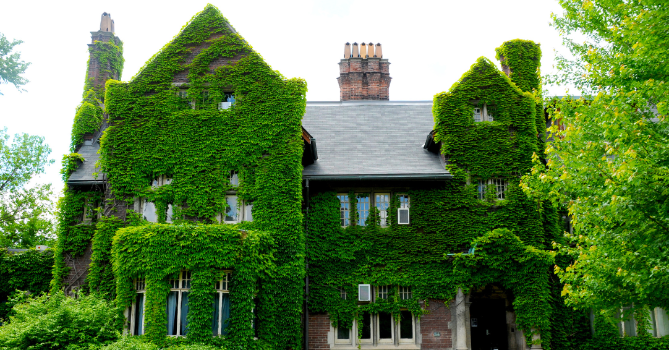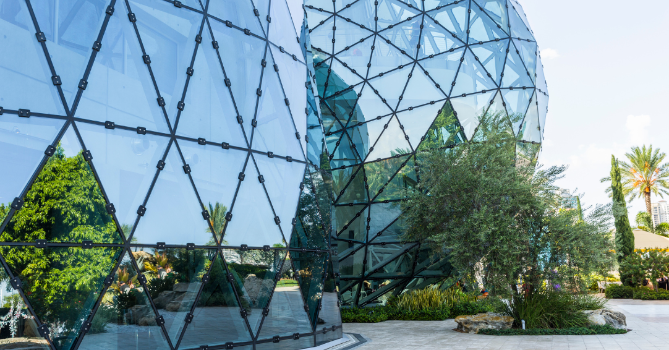
Green Skies Ahead: The Future of Eco-Friendly Design
Imagine our world as a big, bustling city that never sleeps. Now, think of climate change like a storm slowly creeping in, changing how everything looks and feels. Architects are like the city planners and builders, working hard to make sure our buildings—our homes, offices, and spaces we love—can stand strong and smart in the face of this storm.
They're doing something really cool: blending the old with the new. They're using what we know about the weather and the planet, combined with some really smart technology, to design buildings that not only look good but are also good for the Earth. It's like they're speaking to the future, saying, "We're ready for you, and we're making sure our cities are safe, sustainable, and beautiful places to live."
This isn't just about fancy gadgets or the latest trends. It's about using resources wisely, making sure buildings can handle the heat or the cold without wasting energy, and picking materials that are kind to the planet. It's a big, bold step into the future, with architects leading the way, showing us how to make peace with our planet, one building at a time.
So, let's dive into this journey together, exploring how the challenges of our changing climate are inspiring new, exciting ways to think about architecture and design.
Sustainable design is like planning a garden. You want it to thrive, not just today, but for years to come. It's all about choosing plants that are right for the soil, require less water, and attract bees and butterflies. Now, imagine doing the same for buildings. This is what architects are doing with sustainable design, making sure buildings can stand the test of time, weather, and changes, all while being gentle on the planet.
Here's the heart of it: buildings use a lot of energy, from lights to heating and cooling. They can also harm our environment if not thoughtfully designed. But when architects focus on sustainability, they pick materials and designs that reduce harm and even give back to the environment. It's like choosing bamboo straws over plastic ones but on a much, much bigger scale.
Sustainable design isn't just good for Earth. It's good for us, too. It means cleaner air, more natural light, and even savings on energy bills. Buildings that pay attention to sustainability make our cities more livable and more lovable.
Also, this approach is getting creative. Imagine buildings that clean the air, generate their own power, or even change shape with the weather. The future of architecture is not just about creating spaces that look good but ones that do good.
So, as we face challenges like climate change, sustainable design isn't just nice to have; it's a must-have. It's the blueprint for a world where we live in harmony with nature, making smarter choices today to ensure a brighter, greener tomorrow.

Imagine you're playing with building blocks, but instead of the usual plastic pieces, you have blocks made from materials that can clean the air, change colors with the temperature, or even grow plants. This is what's happening in architecture today, as we discover and use innovative materials and construction techniques that are changing the game.
Let's talk about some of these cool new materials. First, there's something called "self-healing concrete." It's like skin that heals itself after a cut. If a crack forms in this concrete, it fixes itself up, making buildings last longer and reducing maintenance costs. Then, there are materials that actually clean the air. Imagine a building that helps the environment just by standing there!
Construction techniques are getting a major upgrade too. Prefabricated parts, made in factories and assembled on-site, speed up construction and reduce waste. It's like using a kit to build a model plane, but for real buildings. This means less mess, less noise, and faster building times.
And then there's 3D printing. Yes, we're actually printing parts of buildings now! This method can create shapes and forms that were impossible or too costly before, opening up new possibilities for design and efficiency.
All these innovations mean buildings not only look cooler and are more interesting; they're also smarter and kinder to our planet. They use less energy, reduce waste, and even contribute to our well-being. It's a win-win for us and the environment.
So, the next time you see a new building going up, remember, it's not just bricks and mortar. It could be a peek into the future of living sustainably and creatively on our planet.

Let's dive into two groundbreaking projects that show just how cool and forward-thinking architecture can become when we mix sustainability with innovation.
First up, imagine a building in London, called The Crystal, that's almost like a giant, futuristic greenhouse, but for people. This isn't just any building; it's a masterclass in sustainability. The Crystal collects rainwater for use within, harnesses solar power to keep its lights on, and uses natural light so well that it barely needs any artificial lighting during the day. It's a living example of how buildings can reduce their impact on the environment and still be fully functional, impressive spaces. It’s like seeing the future of architecture in action today.
Then, there’s the story of the Coolest White project by UNStudio. Imagine a paint so smart that it can cool down buildings just by being applied to their exteriors. This isn't science fiction; it's real, and it's helping combat the urban heat island effect, where cities get significantly hotter than their surroundings because of all the concrete and metal absorbing heat. This special paint reflects sunlight away, keeping buildings cooler and reducing the need for air conditioning. It’s a simple idea with a big impact, making our cities more comfortable and sustainable.
Both of these projects are more than just buildings; they're beacons of what's possible when we think outside the box. They tackle real-world problems like climate change and urban heat with innovative solutions that are not only effective but also practical and replicable. They're proof that with the right approach, our urban landscapes can be transformed into sustainable, efficient, and beautiful environments that cater to our needs today and preserve the planet for future generations.
These case studies are just the tip of the iceberg. They open doors to endless possibilities where technology and sustainability intersect, leading us towards a greener, more innovative future in architecture and design.
Looking ahead, architecture isn't just about creating spaces; it's about shaping the future. Imagine buildings that not only stand tall but also breathe, think, and even heal themselves. The future is knocking, and it's bringing with it homes that can generate their own energy, offices that clean the air, and public spaces that adapt to our needs in real time.
One exciting direction is the blend of nature and technology. Think of living buildings covered in green, not just for beauty but to produce food, purify the air, and create natural insulation. It's like turning concrete jungles into actual jungles, where buildings work with nature, not against it.
Then, there's the digital revolution. We're already seeing how data and smart technology make buildings more than just places to live and work. They're becoming intelligent systems that know how to conserve energy, keep us comfortable, and even anticipate our needs. It's as if our buildings are getting to know us, making our lives easier and more sustainable.
As we move forward, the focus will also be on making sure everyone can enjoy these advancements. Sustainable and smart doesn't just mean high-tech; it also means accessible. Future architects will design not just for today but for everyone and tomorrow, ensuring that our spaces are inclusive, adaptable, and ready for whatever the future holds.
The journey ahead in architecture is thrilling. It's about more than just buildings; it's about crafting a better, smarter, and greener world for all of us to share.
As we've journeyed through the evolving landscape of architecture, it's clear that the field is not just responding to the present; it's reaching into the future. Sustainable design, innovative materials, groundbreaking projects, and the promise of what's to come paint a picture of an industry at the forefront of change. It's a world where creativity meets responsibility, where the buildings we live and work in not only fit our needs today but also safeguard the planet for tomorrow.
This isn't just about making buildings greener or more technologically advanced. It's about reimagining our relationship with the spaces around us, making them work harder for us and the environment. The stories of The Crystal and the Coolest White project, among others, are just the beginning. They show us what's possible when we dream big and act thoughtfully.
As we look to the future, it's clear that the role of architects and designers is more important than ever. They are not just building structures; they are building hope, crafting a vision of the world that is sustainable, inclusive, and ready for the challenges ahead. So, here's to the future of architecture—a future that's not only built with bricks and mortar but with the spirit of innovation and a deep commitment to our planet and its people.